If you are planning to ship goods from Vietnam to the U.S.A for the first time, or you already have shipping experience, good or bad, we come to you with solutions for shipping from Vietnam to the U.S.A that will make you understand better this complex process. To make it easier for the reader, we divided this must-read guide into 3 parts:
Part 1. How to find a reliable freight forwarder?
Part 2. How many modes of transportation are there from Vietnam to the U.S.A?
Part 3. How to save money?
A freight forwarder, forwarding agent, or cargo agent is an experienced person (or company) from the international trade and transport community that coordinates and ship goods from one place to another by air, sea, rail and/or highway.
He is the best option because he will help you find solutions for shipping from Vietnam to the U.S.A. when you want to ship by yourself or you have a hard time finding a reliable business partner. Also, we also recommend you to find a cargo agent who will be able to help you in this complex process if you are an occasional carrier who knows little about international transport.
A freight forwarder would make a great difference when you don’t have enough time and energy, experience or you just want to avoid all the troubles this process might bring you sometimes such as document preparation or cross-see transportation process problems.
In other words, if you want to save time and money while making an international delivery from Vietnam to the U.S.A by any mode of transportation, consider using a freight forwarding agent. He will make sure that your cargo will arrive on time and in the right conditions.
Regardless of the mode of transportation, shipping goods was always a complex process.
When you ship goods from Vietnam, you will need a warehouse for storage and preparation, and choosing a Vietnamese freight forwarder is the best option because he also has the advantages of language and geography.
An experienced Vietnamese freight forwarder will have these abilities: he will be fluent in Vietnamese, it will have a thorough knowledge of the Vietnamese business culture, experience in managing Vietnamese suppliers, category and sourcing process experience, quality control experience, audit experience, and logistics experience.
Time, money, and the success of your shipment from Vietnam to the U.S.A is what matters.
A freight forwarder is a reliable and experienced agent who will help you find solutions for shipping from Vietnam to the U.S.A.

To be sure they provide what you need, you can ask them the following questions to assess whether they are qualified for your transportation or not:
1) Does the freight forwarder have a business license from the Vietnamese Ministry of Transport? – Having a business license makes everything legal and transparent for you.
2) Does the freight forwarder have an official website, and has a good ranking on Google? – On their website, you can find the necessary information about their services and costs. Not to mention that in these modern days, Google reviews are a must-have for any company that respects itself and cares for its customers.
3) Does the company have a good insurance plan? – Having a good insurance plan is very important because it will compensate for your merchandise if any damage occurs in shipment or warehousing.
4) Do they have a complete cargo tracking system to update your cargo progress in real-time? – Finding a cargo shipping partner that offers cargo tracking is crucial because you can see in real-time where your shipping is and how much it takes to arrive at the final destination.
5) You can also ask them to provide the most recent shipment record or bill of lading – A bill of lading contains all relevant details about the type, amount, condition, and destination of the goods.
6) During the consultation, were the responses prompt, with professional advice and explanations? – If you are convinced by their services, but you still have some doubts about the process, is best to try the freight forwarder with a shipment of small goods. This way, if anything goes wrong, you won’t lose a big amount of money.
Before talking about the modes of transportation is good to know what standards and regulations apply in the U.S.A, and also which are restricted and prohibited goods.
Customs law in the U.S.A is very strict regarding proper submission and preparation of customs documentation, and sometimes errors in paperwork can result in fines and even confiscation of merchandise as contraband.
Customs and Border Protection (CBP) does not require an importer to have a license or permit, but depending on the goods being imported, other agencies may require it. These goods include civil aircraft parts, drugs and medical devices, food, plants, livestock, firearms, audio/video cassettes and tapes, textiles, footwear, alcoholic beverages, and so on.

The required customs documents when you are importing to the U.S.A are the following: bill of lading, commercial invoice, packing list, and arrival notice.
Prohibited means the goods are forbidden by law to enter the U.S. Here are some examples of prohibited goods: dangerous toys, cars that don’t protect their occupants in a crash, bush meat, or illegal substances like absinthe and Rohypnol, narcotics and some of the habit-forming drugs, live fish, images representing children in a degrading or ridiculous way, used clothes, firearms and ammunition, explosives, toxic and hazardous products.
Restricted means that special licenses or permits are required from a federal agency before the goods are allowed to enter the U.S. such as certain fruits and vegetables, animal products, animal byproducts, and some animals.
U.S.A’s top 10 imported items in 2018 were: machinery including computers, electrical machinery, equipment, vehicles, mineral fuels including oil, pharmaceuticals, optical, technical, medical apparatus, furniture, bedding, lighting, signs, prefab buildings, plastics, plastic articles, gems, precious metals, organic chemicals.
There are numerous options for transporting goods in the U.S. – ship transportation, air transportation, land transportation, and multimodal transportation.
When you’re planning your shipment you should think about the costs, shipment urgency, the value of the goods, size and weight of the package.
The mode of transportation is an important aspect and has to be evaluated. Depending on your load volume, it is best to evaluate the mode of transportation when you are planning the shipment process because each option of transport has advantages and disadvantages. By choosing the right mode of transportation, you can significantly optimize your cargo flow and save money and time.
An experienced Vietnam-U.S.A freight forwarder will help you find solutions for shipping from Vietnam to the U.S.A and will have: excellent communication skills, the ability to choose the right mode of transportation, and he will save you money and time.
Studies have shown that 95% of product samples and a small amount of high-value goods are sent by courier (DHL, FedEx, UPS, TNT, EMS, etc.).
Express delivery is suitable for goods that are less than one cubic meter or 200 kilograms. If you have an urgent or a quick delivery, express shipping is the best option because is a relatively easy way to transport goods, and it takes 4 to 7 business days to reach your doorstep.
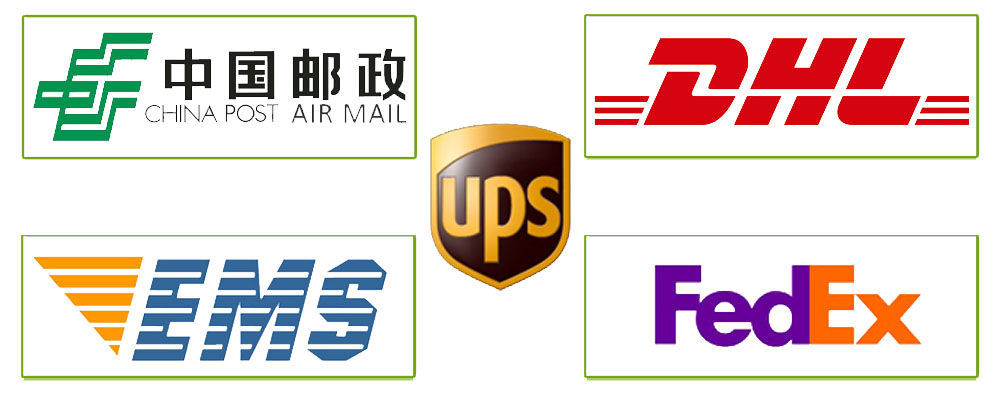
The prices and rates for express delivery are higher than other forms of transportation. Also, the cost of express shipping may increase during the holidays.
Shipping freight under 100 kg from Vietnam to the U.S is cheaper and faster by express delivery.
If you want to save money, cargo agents are the best solution because they can find you an express company that gives you a reasonable price, and they can also get a discount price that you won’t find on their official website
Sea shipping is suitable in general for loads over 500 kilograms or when the size of the products occupies more than two cubic meters. However, it is also the most complicated mode of transportation, and it takes a long time, but sometimes this might be the only option.
From Vietnam to the U.S.A, sea shipping time, in general, is estimated at around 45 business days from port to port.
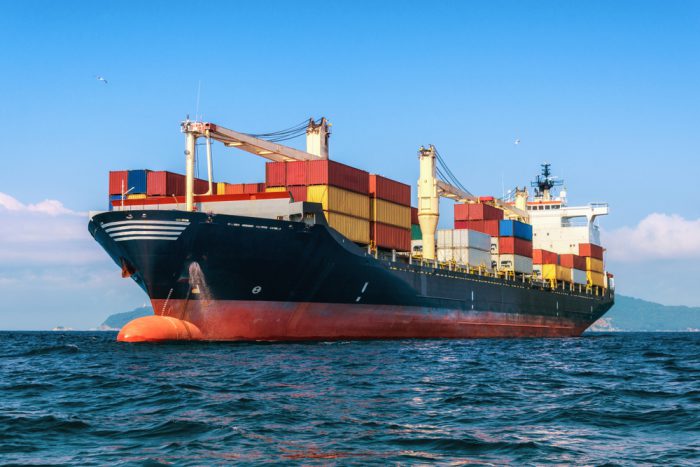
In Vietnam, ports are classified into three categories:
1. Ports that are located in the North of Vietnam: Cam Pha Port, Haiphong Port, Nghe Tinh Port, and Vung Ang Port;
2. Port of Central Vietnam – Da Nang Port;
3. Ports that are located in the South of the country: Qui Nhon Port, Nha Trang Port, Ho Chi Minh City / Cat Lai Port, and Can Tau Port.
According to the U.S Coast Guard, there are approximately 360 commercial ports, but here are the top 10 U.S. container ports: Port of Los Angeles, Port of Long Beach, Port Authority of New York and New Jersey, Port of Seattle and Tacoma, Port of Savannah, Port of Oakland, Port of Virginia, The Port of Huston Authority, Port of Charleston, and Port of San Juan, Puerto Rico.
Sea freight shipping is the best choice for bulk goods transportation. If your overall cargo volume doesn’t meet one full container requirement, you can choose Full Container Load (FCL) or Less than Container Load (LCL).
There are three types of containers 20 ft., 40 ft. and a 40 ft. high cube container. The 20 ft. containers are designed to carry more weight such as minerals, metals, machinery, sugar, paper, cement, etc., while the 40 ft. containers are designed to carry voluminous cargo rather than heavy cargo, for example, furniture, steel pipes, paper scrap, cotton, tobacco, etc.
If you don’t have enough goods to fill a 20′ or a 40′ container (FCL), you should choose LCL. This enables importers to ship smaller amounts of cargo, which doesn’t have the right volume to make Full Container Load a viable option. This means your cargo is combined with other shipping cargos for the same destination. When combining several shipments in one container, your freight forwarder needs to do more work. LCL freight is calculated in cubic meters (CBM) and charged based on the volume.
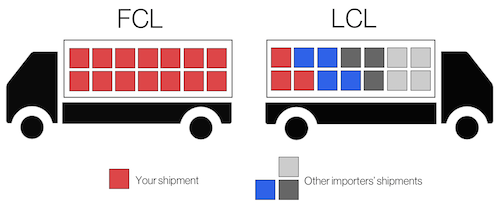
FCL refers to when the quantity of your goods is large enough that they can be put in at least one container. In this case, the freight is calculated on an FCL basis. FCL shipment will be loaded and sealed at origin by your supplier, then shipped to your final destination.
You should choose this mode of transportation if your goods are smaller than 2 CBM and 200 kilograms.
In a matter of days, air freight can bring your cargo from Vietnam to your destination. On average, you can expect your cargo to arrive in 7 business days, depending on the mode of air transportation you choose (economic or express).
The busiest U.S.As’ airports are Memphis International Airport, Ted Stevens Anchorage International Airport, Louisville International Airport, and O’Hare International Airport.
There are two classes of Airfreight, economy and express or fast air transportation.
There are two methods to calculate the air freight price. The first method is cost per kilogram multiplied with the cargo weight, and for the second one, for low-density cargo (low weight and high volume) you will be charged based on the volume it occupies.
To save money, you have to understand the terms FOB, EXW, CIF, and DAP because, in the same transport model, transport cost is a crucial factor.
Many websites use the quotations FOB, EXW, CIF, and DAP. In general, these quotations include information about where your cargo is being shipped to and from, the transport mode and equipment being used, shipment details such as dimensions, weight and a description of the goods.
FOB means free on board or freight on board and is an international shipping agreement used in the transportation of goods between a buyer and a seller.
Your Vietnamese supplier will be responsible for the transportation from the Vietnamese factory to the Vietnamese loading and unloading port. For example, if you see FOB Ho Chi Minh City (HCMC) – Ho Chi Minh City is a city and a port in Vietnam, and it means that this is the port that the supplier will ship your order to, which is covered by the FOB price, and from here, you are responsible for the freight. The freight is divided into two aspects – the first one is from Vietnam airport/port to the airport/port in the U.S.A, and the second one is from the airport/port in the U.S.A to your doorstep.
EXW stands for Ex Works. If you see this quotation on the website you are buying from, it means that the seller is making the goods available at their premises, or another named place.
In other words, EXW means that your freight has been increased one step, and you will be responsible for the transportation from the factory in Vietnam to the loading port in Vietnam. This is an aspect your Vietnamese freight forwarder will help you manage.
Your shipping costs will divide into three categories – from Vietnam factory to Vietnam airport/port – from Vietnam airport/port to the U.S.A airport/port – from the U.S.A airport/port to your doorstep. Over this, other transportation costs will be added such as Vietnamese export costs and customs clearance costs.
Finding a reliable freight forwarder is important because he will let you know where every cost is going, with no hidden expenses.
CIF stands for cost, insurance, and freight, and it means that the supplier is responsible for all transportation costs from the factory in Vietnam to the airport/port in the U.S.A, including insurance.
In other words, CIF is an expense paid by the seller to cover the costs, insurance, and freight if a package or item is lost or damaged while it is in transit to an export port. The seller must cover other expenses such as additional customs, export paperwork, inspections or rerouting, but once the freight is loaded, you (the buyer) become responsible for all other costs, including the expenses from the airport or port in the U.S.A to your doorstep.
With CIF the supplier adds an extra charge to compensate for their efforts, and it becomes more expensive than FOB.
It will save you time and money if you find a freight forwarder, because usually, the suppliers in Vietnam will also find a freight forwarder to deal with the whole process, and they cannot professionally update the status of your goods promptly.
DAP stands for delivery at place or destination delivery. If you see this quote on the website you are buying from, it means that the seller will handle all the charges and the delivery to the buyer facilities, but the import taxes will be paid by the buyer at the destination.
Once the goods are ready for shipment, the packing is done by the seller at his own cost, then the goods are moved to customs location opted by the seller at exporting country at his expenses under DAP terms. All the necessary legal formalities in the exporting country are completed by the seller at his costs and risks; also the insurance up to the destination (U.S.A) is arranged by the seller. If it’s not mentioned in the contract, the unloading cost at the final destination has to be borne by you (the buyer).
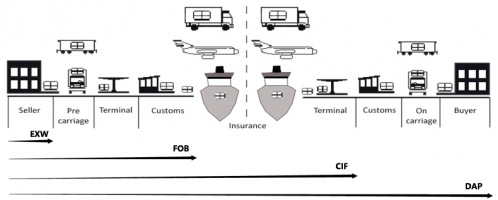
In other words, the seller is responsible for all the expenses and risks to deliver the goods up to the destination mentioned in the contract. From the destination mentioned in the contract, it becomes the buyer’s responsibility for the goods to reach his premises at his own expense.
But even if the seller is responsible for all the shipping steps, he can’t do detail work such as warehousing, labels, and goods inspection, so it is best to find a reliable freight forwarder, to help you with the detail work.
Therefore, the best way to save money and time is by choosing FOB or EXW, because your goods will be in professional hands, with the lowest price, and the fastest time to reach your destination.
When you are importing from Vietnam to the U.S.A, before your goods are released into the country, you will need to pay customs duties. On average, the customs tariff is around 3.5% and it’s among the lowest in the world.
The taxes that you will pay are calculated based on the CIF value of your goods.
Products that have a higher customs tariff are dairy products, sugars and confectionery, beverages and tobacco, clothing.
Non-agricultural goods such as machinery, autos and transportation equipment, information technology products, minerals and metals, petroleum, chemicals, textiles and clothing, leather and footwear, consumer goods, wood products, and fish and fish products, are subject to an industrial tariff levied either on an ad valorem basis (percentage of value) or on a specific basis (e.g., $1 per 100 pounds).
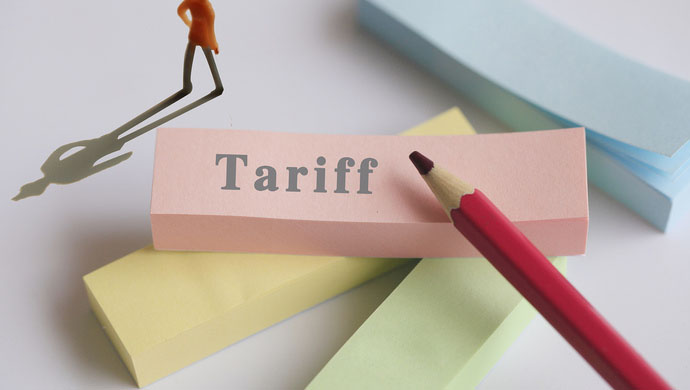
Each state has its own sales tax (it is varying from a state to another), there is no GST or VAT in the U.S.A. You will not have to pay the sales tax for an import of Vietnamese goods because it is only imposed on retail.
Also, the purchase of goods for reselling is exempted of sales tax.
Necessary products like machineries for agriculture, medicine, and so on, are generally exempted of sales tax in most of the states.
If you want to transport goods via express delivery and air freight you should take into consideration these rules because the costs can be high – the actual weight is calculated in kilograms (kg), and the volume is calculated in cubic meters (CBM).
A) Calculating the actual weight – If the actual weight of the goods in kilograms is more significant than its dimensional weight, it will be calculated like this:
Actual weight of the package x cost per kilogram (this price varies from company to company).
B) When the volume of the goods is larger than the actual weight is called dimensional weight – this is an estimated weight calculated by multiplying the length of the package with the width and height divided by a dimensional factor, also called a DIM divisor. Dimensional factors are numbers set by the major freight carriers, and represent cubic inches per pound. The dimensional weight is the weight of the package at the minimum density accepted by the carrier.
Dimensional weight = length × width × height/dimensional factor
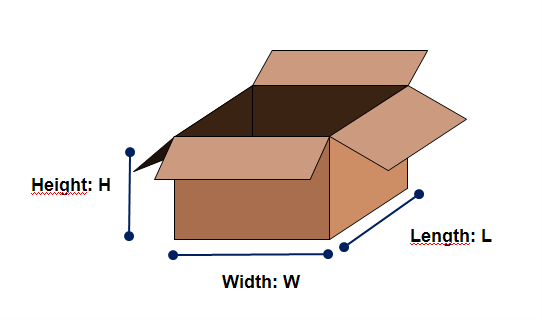
International transport and logistics companies are based on the maximum value they can charge. For example, freight carriers like USPS, FedEx, or UPS calculate shipping charges based on whichever number is greater (actual weight or dimensional weight). For example, if you have a package that has the actual weight less than 31 kilograms (let’s say 29 kg), the freight carrier will charge for the dimensional weight of 31 kilograms since it is the greater number. For them, whichever number is higher becomes your billable weight.
Therefore, in some cases, to save money it is necessary to compress the package and reduce the measurement volume.
Finding an experienced freight forwarder will help you find the ideal solutions for shipping from Vietnam to the U.S.A, and will save you money and time.
In general, planning ahead will help you avoid trouble. In international transportation, you always have to plan your shipment in advance because the delivery time of your goods is the crucial factor that decides the mode of transportation.
Holidays in Vietnam can have a great influence on your delivery time, and knowing the holidays’ schedule in Vietnam and important shipping deadlines and guidelines will save you time and money because in those peak periods the shipping prices are usually higher than normal and the factories are closed.
The peak seasons in Vietnam is represented by the holiday shopping season (fall months) when prices rise as businesses prepare for holiday shopping.
If your shipment is not urgent, you will save money and you will also have time to face unplanned delays such as congestion, blockages, supplier issues, and documentation mistakes. You can also ask questions surrounding the company’s response to delays, to see if they have procedures for resolving these issues.
Multimodal transportation also known as combined or hybrid transportation is the transportation of goods with at least two different modes of transport (e.g. sea freight and air freight), under a single contract.
Legally speaking, in this mode of transportation, the carrier is responsible for the entire transport, and he does not have to possess all the means of transport.
This hybrid solution will deliver the goods in the correct time frame and keep your shipment on budget.
This mode of transportation comes with many advantages such as centralization of responsibility in one transport operator, economies of scale in transport negotiations, use of international experience in transportation, in the field of bureaucracy and commerce, better use of available infrastructure and more efficient means of transport, focused on cost reduction, and reduction of indirect costs.

A freight forwarder can offer you the option of multimodal transportation for your delivery if air freight is too expensive, and sea freight cannot be delivered in time. They can also use their contacts to your advantage and find a way to achieve this goal faster and cheaper, which will help you save money and time.
The shipping process involves many steps such as warehousing, document preparation, customs issues, cargo insurance, and so on, which makes it complicated regardless of the mode of transportation you chose from Vietnam to the U.S.A.
With the rapid development of international trade, the international logistics industry has also grown, and choosing an experienced freight forwarder might be the key to finding solutions for shipping from Vietnam to the U.S.A.
Through our experienced freight forwarders, we are offering you the best shipping possible from Vietnam to the U.S.A.
Our company is based on customer gain, placing customers first. We have experience, airline relations, customs reputation, competitive prices, and timely delivery, and our success is based on integrity and responsibility, and it is our job to find you the best freight forwarder.We will help you find a viable solution and see measurable results in little or no time.
If you‘re ready to start your shipping process click here for more information and offers.
